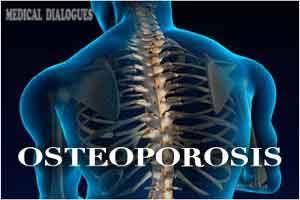- Home
- Editorial
- News
- Practice Guidelines
- Anesthesiology Guidelines
- Cancer Guidelines
- Cardiac Sciences Guidelines
- Critical Care Guidelines
- Dentistry Guidelines
- Dermatology Guidelines
- Diabetes and Endo Guidelines
- Diagnostics Guidelines
- ENT Guidelines
- Featured Practice Guidelines
- Gastroenterology Guidelines
- Geriatrics Guidelines
- Medicine Guidelines
- Nephrology Guidelines
- Neurosciences Guidelines
- Obs and Gynae Guidelines
- Ophthalmology Guidelines
- Orthopaedics Guidelines
- Paediatrics Guidelines
- Psychiatry Guidelines
- Pulmonology Guidelines
- Radiology Guidelines
- Surgery Guidelines
- Urology Guidelines
ACR Updates guidelines for Treating Glucocorticoid-Induced Osteoporosis

American College of Rheumatology has updated its 2010 guidelines for the prevention and treatment of glucocorticoid-induced osteoporosis based on the findings of a systematic review that focused on the benefits and harms of glucocorticoid-induced osteoporosis.
The updated guidelines include recommendations for the initial assessment and reassessment of patients beginning or continuing long-term glucocorticoid treatment, and the use of calcium, vitamin D, bisphosphonate, raloxifene, teriparatide and denosumab treatment for adults who are on long-term glucocorticoid treatment plans
The guidelines are :
- Osteoporosis is a concern for patients who take glucocorticoids long-term, which accounts for 1% of all Americans. Of these, 10% will have a fracture and 30–40% will have radiographic evidence of vertebral fractures, so the risk of adverse effects is very real and they usually occur rather quickly within the first three to six months of treatment.
- Patients at greatest risk of fractures include those with low bone strength at the beginning of treatment and those who exhibit a greater rate of decline in bone mass during treatment. But the damage can be reversible. Evidence has shown that bone mineral density increases and fracture risk declines after the treatment stops. Risk calculators can be helpful in determining a patient’s risk of these fractures.
The recommendations cover:
- Treating only with calcium and vitamin D in adults at low fracture risk.
- Treating with calcium and vitamin D plus an additional osteoporosis medication (oral bisphosphonate preferred) in adults at moderate-to-high fracture risk.
- Continuing calcium plus vitamin D but switching from an oral bisphosphonate to another anti-fracture medication in adults in whom oral bisphosphonate treatment is not appropriate.
- Continuing oral bisphosphonate treatment or switching to another antifracture medication in adults who complete a planned oral bisphosphonate regimen but continue to receive glucocorticoids.
- Recommendations for special populations, including children, people with organ transplants, women of childbearing potential, and people receiving very high-dose glucocorticoids.
To Read the full guideline click on the following link :
https://www.rheumatology.org/Portals/0/Files/Guideline-for-the-Prevention-and-Treatment-of-GIOP.pdf

Disclaimer: This site is primarily intended for healthcare professionals. Any content/information on this website does not replace the advice of medical and/or health professionals and should not be construed as medical/diagnostic advice/endorsement or prescription. Use of this site is subject to our terms of use, privacy policy, advertisement policy. © 2020 Minerva Medical Treatment Pvt Ltd